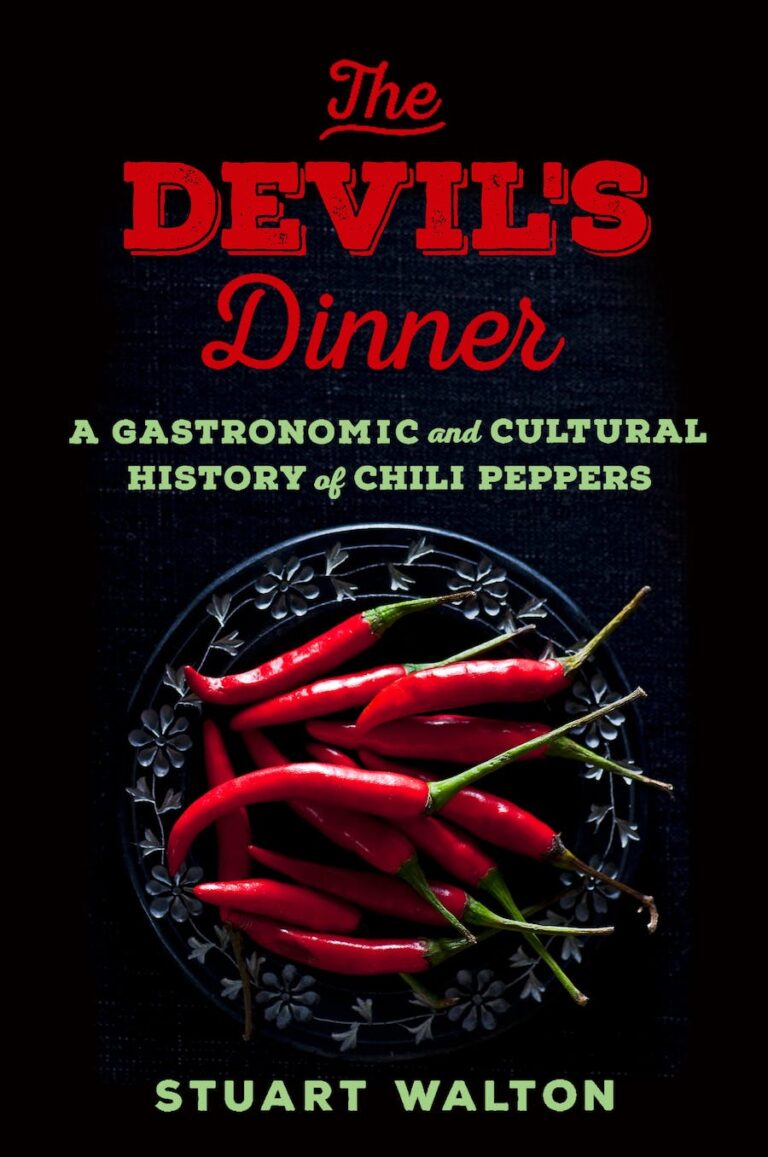The taste for hot and spicy food has become an international passion in modern times. Many world cuisines rely on forthright, edgy seasoning for their appeal, particularly outside their regions of origin. But what they all have in common is one of the most widely traveled spices in global food history—the chili pepper. There is chili in the sizzling salsas of Mexican tradition, in the piri-piri marinades of Portugal, in the red-hot dishes of classical Indian cooking, in Thai curries, Sichuan specialties, punchy Korean relishes, and nourishing Vietnamese soups. And of course, in the celebrated state dish of Texas. In tamer guise, it found its way into Hungarian goulash and the ‘deviled’ preparations of central European cookery.
There are sound reasons for chili’s global reach. It’s pretty good for you, to begin with, a highly nutritious fruit with vitamins and minerals in abundance, its molten-lava heat an effective remedy for warming you up in cold conditions, and cooling you down when it gets too hot. It will grow in a wide variety of climates, and unlike other spices such as pepper, ginger, and cinnamon, it never became wildly expensive to consume. It was truly a democratic spice. And it adds vigor and excitement to the blandest food, enlivening rice and corn dishes into something much more appealing to the jaded palate.
Something else, though, has happened to chili in the modern world. As well as being an indispensable seasoning and flavoring ingredient, it has found itself the center of a devotional cult across the western hemisphere. A kind of arms race has sprung up among pepper growers, with dedicated cultivators constantly seeking to outdo each other in producing hotter and hotter varieties of chili. Keeping up with who currently lays claim to the most incendiary pepper in the world is almost as frantic as following trading on the global stock exchanges. And along with that agricultural competition has come a consumer willingness to engage in chili consumption as a spectator sport. YouTube is full of video clips of people trying—really trying—to cope with the onslaught of consuming chilies that are literally hundreds of thousands of times hotter than famous hot sauce products like Tabasco.
In my book, The Devil’s Dinner, I take a look at all these tendencies, following the migratory history of the chili pepper as it set off around the known world from its origins in Central and South America with the voyages of discovery and the trading missions of the 1500s. We find out what culinary uses chili has been put to in all of the various regions in which it has found a home. I offer a selective listing of chili varieties and their properties, including some of the unlikeliest specimens of all—the Brazilian Starfish, the Bulgarian Carrot, the Facing Heaven chili of China, and—oh my!—the Peter Pepper, so named for its precise resemblance to the male sex organ.
As well as the biological and historical aspects of the cultivation of chili, I also examine the cultural meanings that spicy food has assumed over the course of its history. As my title suggests, there has always been a hint of the demonic about a little fruit that scorches the mouth with the heat of Hell. Then too, there is something sexy about spiciness, a fact that preoccupied the moralists of the nineteenth century as much as it obsesses today’s sexual adventurers. The illusion of burning that makes it so painful to eat has been turned to aggressive intent, from ancient forms of chemical warfare to today’s riot-control pepper sprays. I inquire into why competitive chili-eating has become a guy thing—heroic bravado or classic male idiocy? And in a final chapter, I consider how chili fits into a worldwide diet that has become gradually more and more homogenized in the era of globalization.
Chili will continue to fascinate us for a long time to come. It is, as anybody who has ever reached vainly for a glass of cold water to extinguish its fire (clue: milk is much better) can tell, it is impossible to ignore. It makes its presence felt long after you have swallowed a mouthful of anything seasoned with it. It tempts you and dares you, seduces and punishes. Chili is not just a culinary ingredient, it’s a cultural phenomenon. The Devil’s Dinner tells the story of this remarkable and complex spice.

